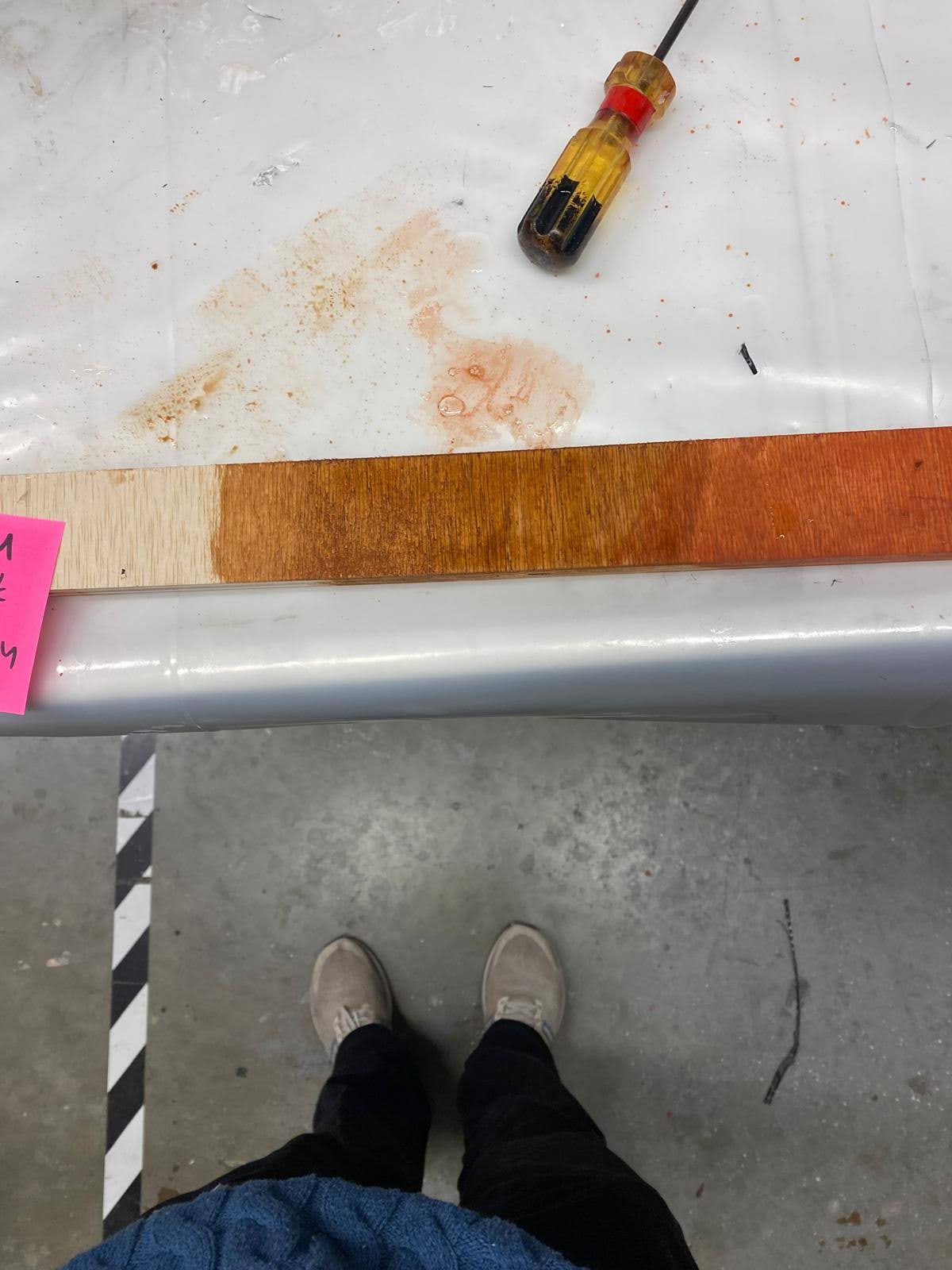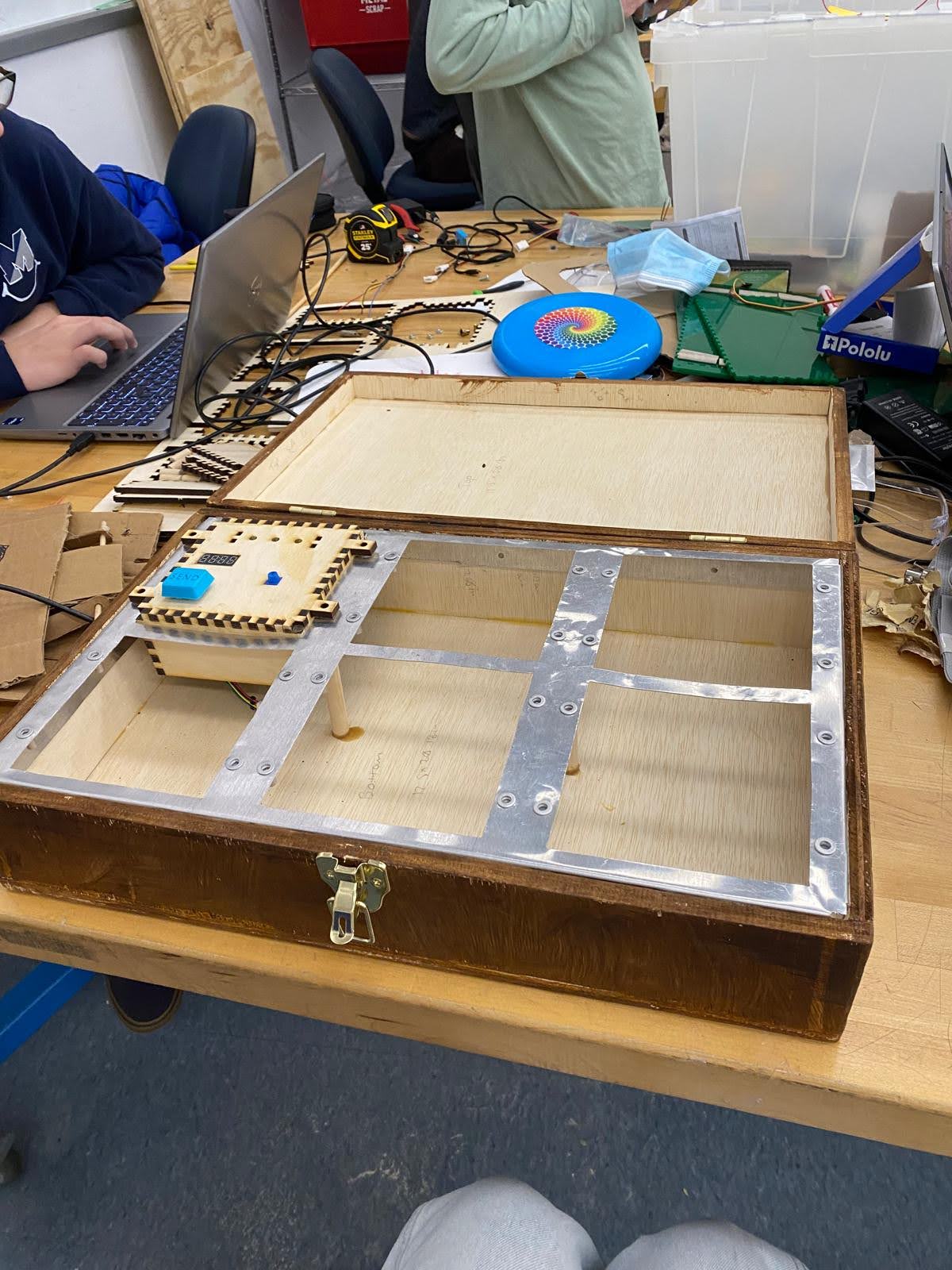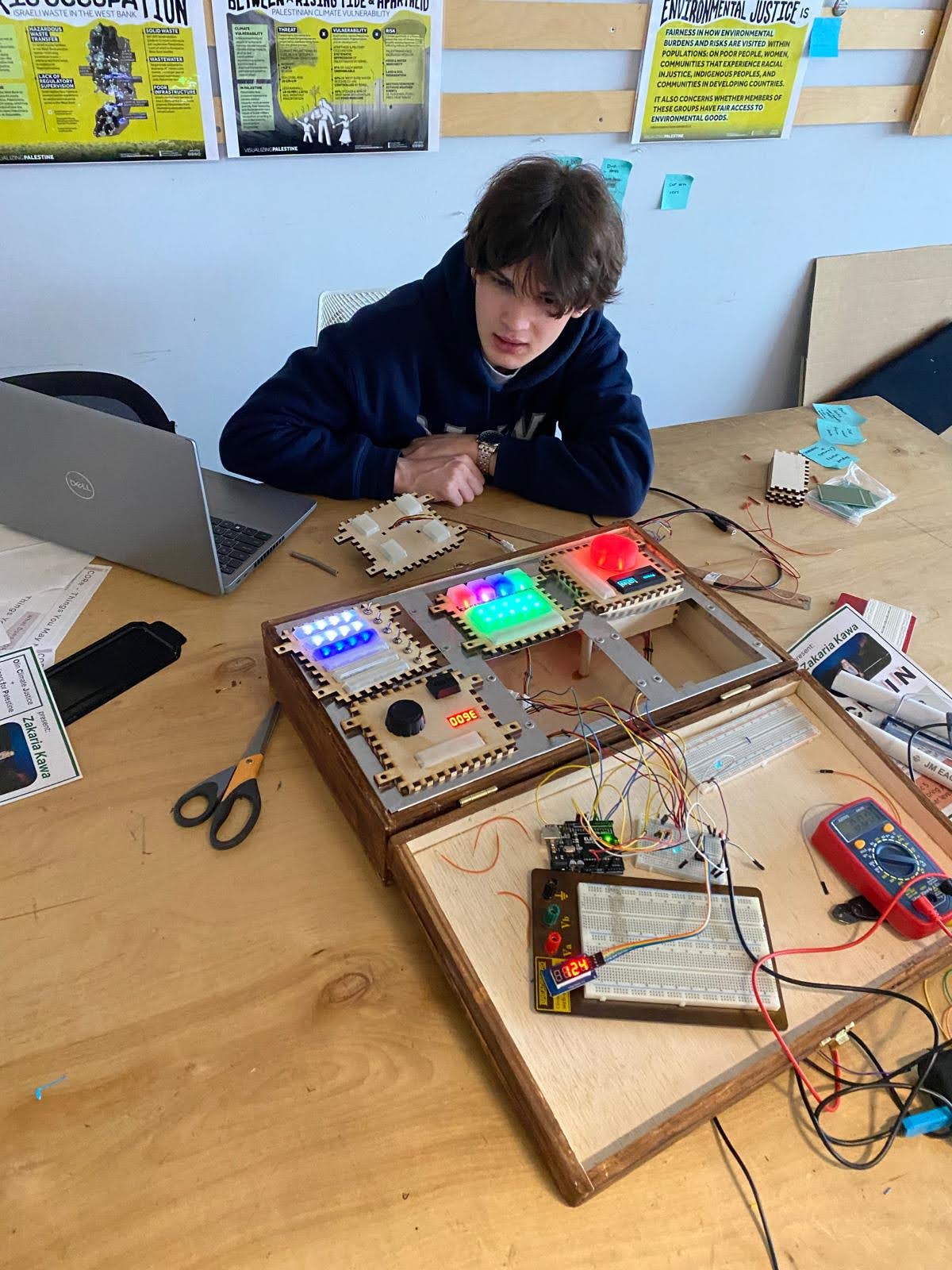Mechanical
Our goal was to create an aesthetically pleasing briefcase & 5 modules that kept the integrity of the original game, ‘Keep Talking and Nobody Explodes’.
- Suitcase must have space for wires and power bank
- Modules must house related electrical components
- Modules must be modular to preserve the potential for new gameplay + future module development
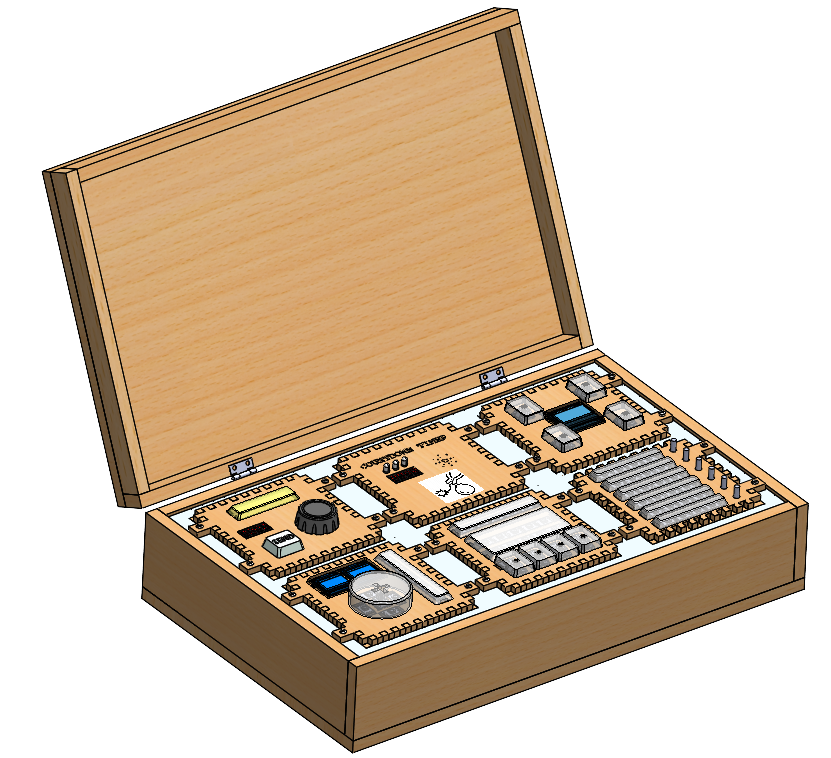
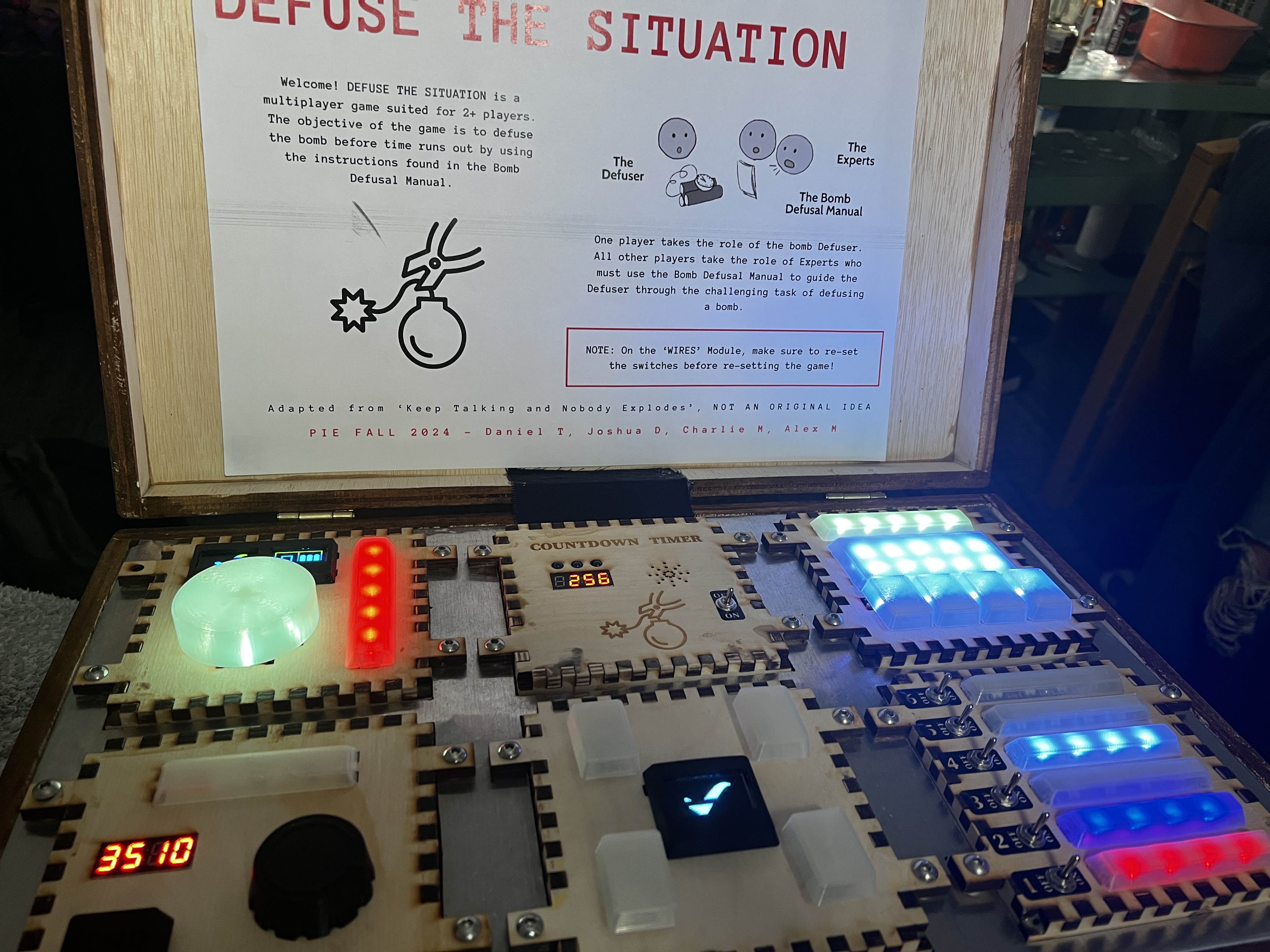
Suitcase
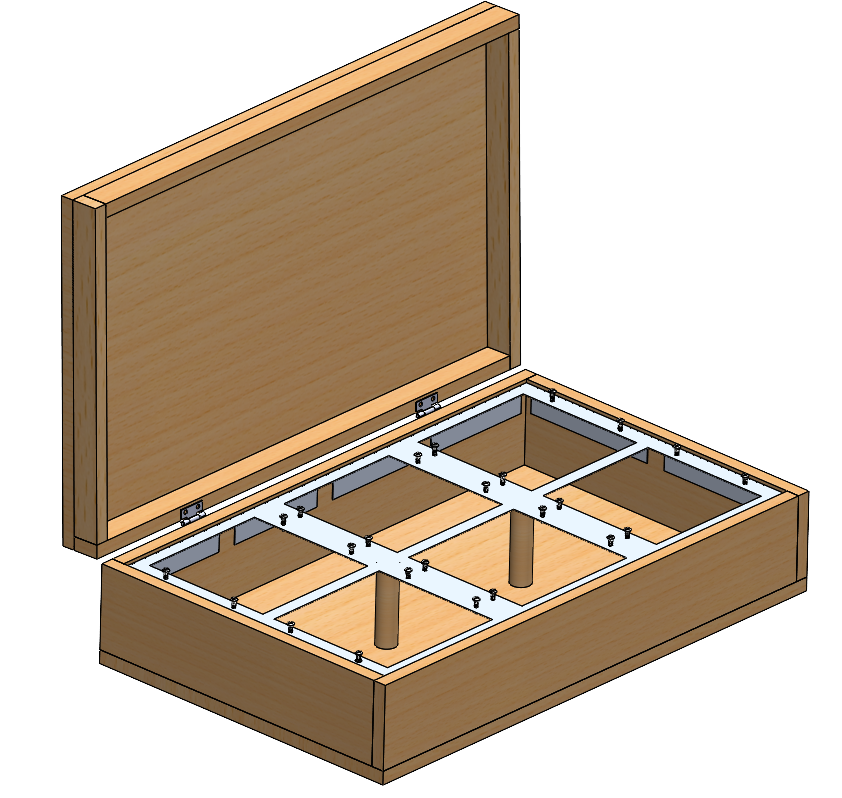
The suitcase is comprised of two main parts: The wooden box and the sheet metal top. The wooden box is the main structure, holds all of the components, and provides supports for the sheet metal top to sit on. The sheet metal top sits on top of wooden supports in the suitcase, and provides a surface for modules to sit in and get securely screwed into.
The wooden box is made out of 1/2in plywood cut on a table saw and is held together by wood glue. The 1/40in Aluminum Sheet metal was cut on a plasma cutter, bent into shape using a finger brake press, holes were cut using a turret punch, and sides sanded with a manual file. Rivet nuts were inserted using a rivet nut tool.
Materials Used:
- Plywood
- Aluminum Sheet Metal
- Linen Fabric
- Hinges
- Clasp
- Wooden Dowels
- Rivet Nuts
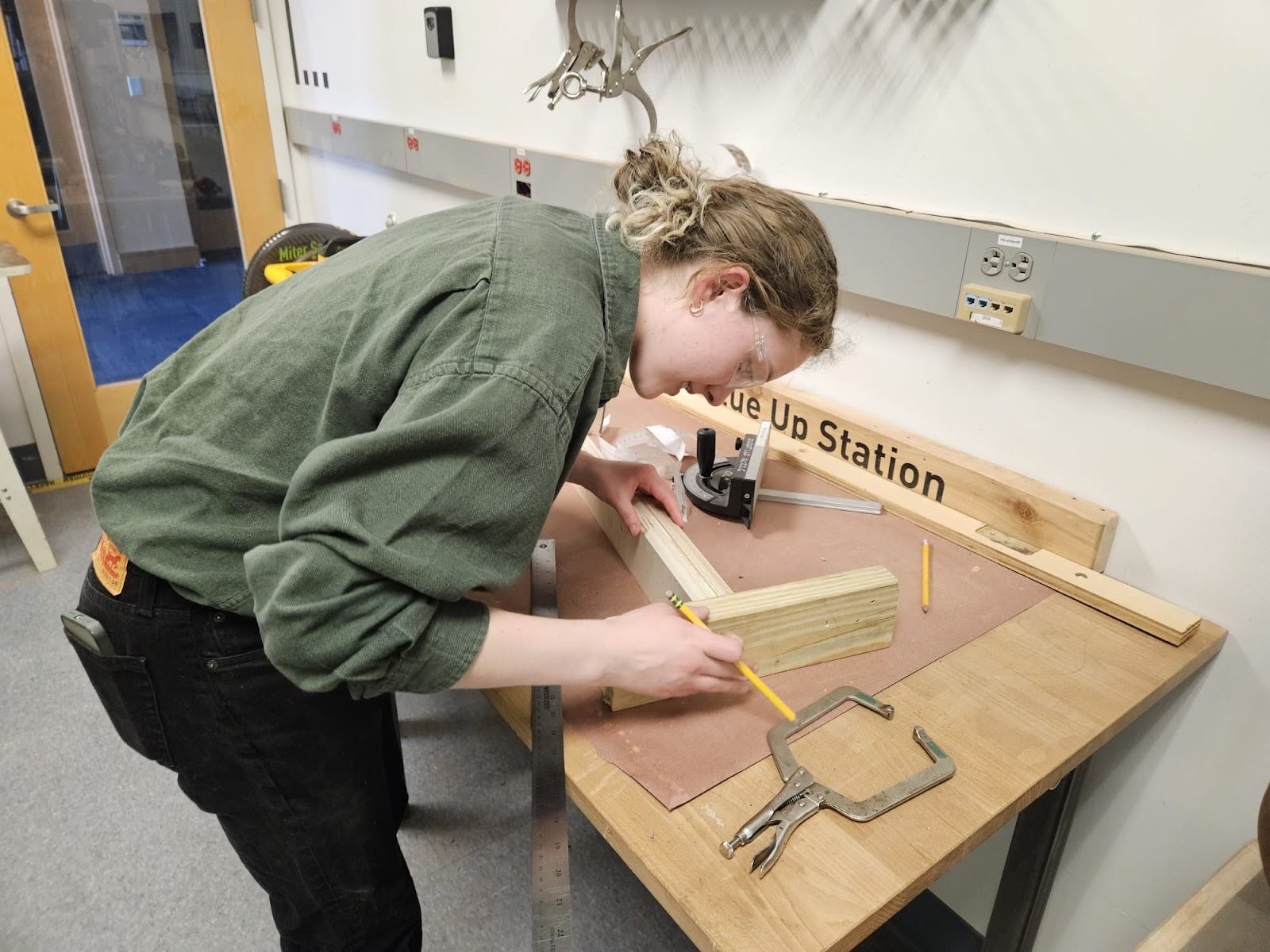
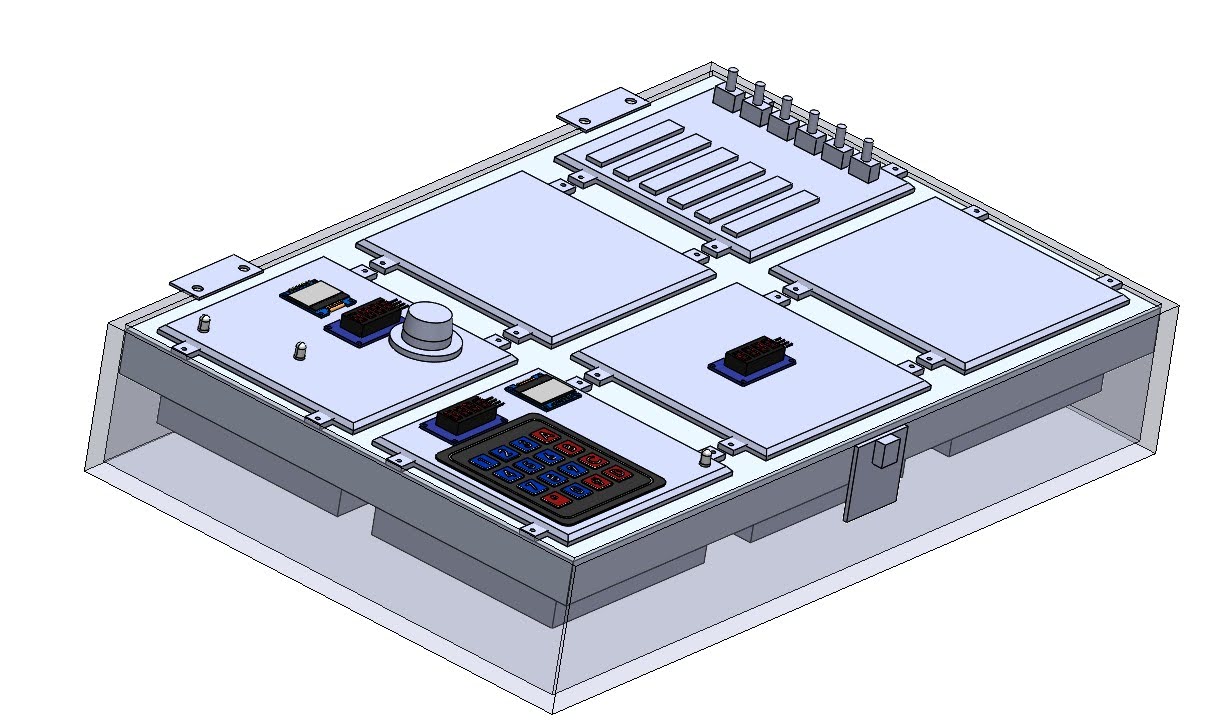
Major Design Considerations:
- Module modularity
- A major goal for us was to ensure that modules could be moved around and potentially swapped out. In order for this happen, modules had to be the same size and easily movable
- Space for electrical integration below modules
- Our modules are designed to communicate with and receive power from the central timer module - we left space between the physical modules and the suitcase floor for clean and easy wiring
Other considerations:
- Supporting the sheet metal top with dowels -> this changed throughout the project as we tried different configurations. We placed dowels in areas where we expected force to be placed more frequently
Modules
Our project contained 5 playable modules (Button, Memory, Wires, Morse Code, Keypad) and 1 central module (Timer).
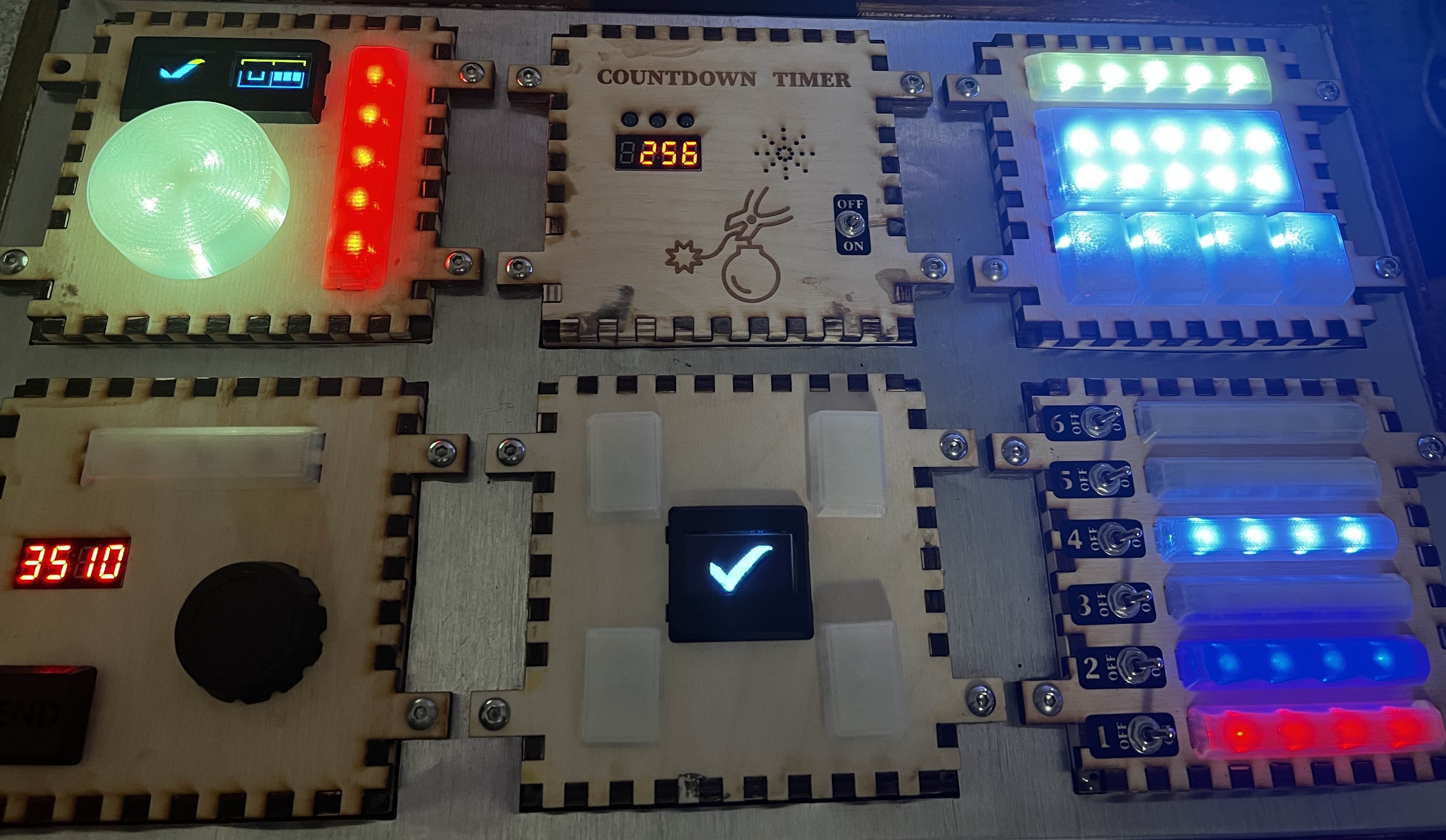
Left to Right, Top to Bottom: Button, Central (timer), Memory, Morse Code, Keypad, Wires
To maintain a modular game design, we built the modules so that they had the same base size and just changed the top face to match the gameplay dynamics of each individual module.
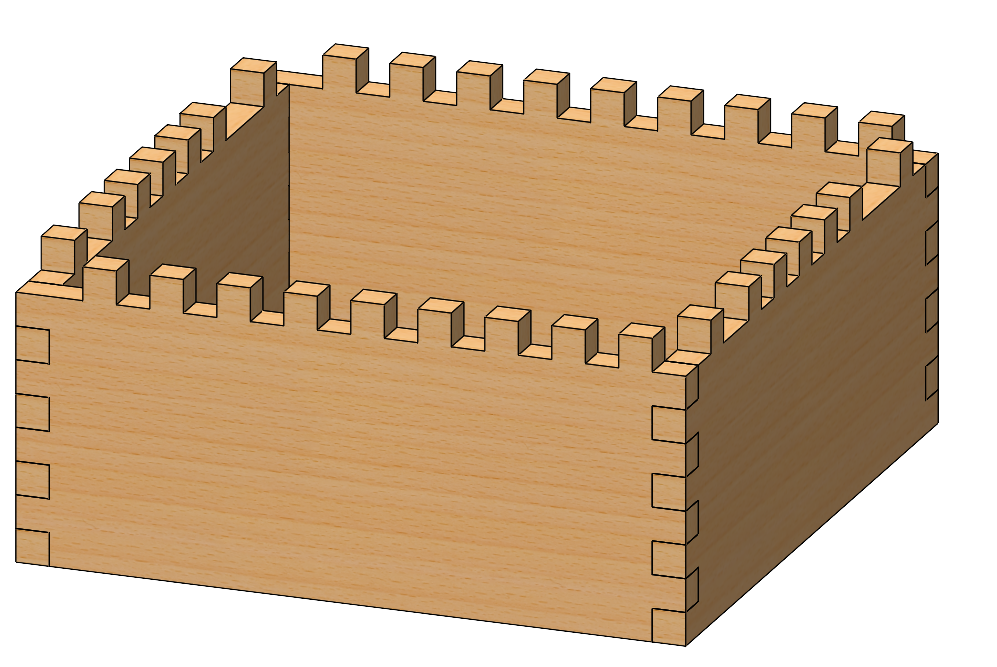
Here is an example module base. We designed all modules to be the same size, so that if we were to shuffle the modules around, or even create new ones, there was already a standard for modularity.
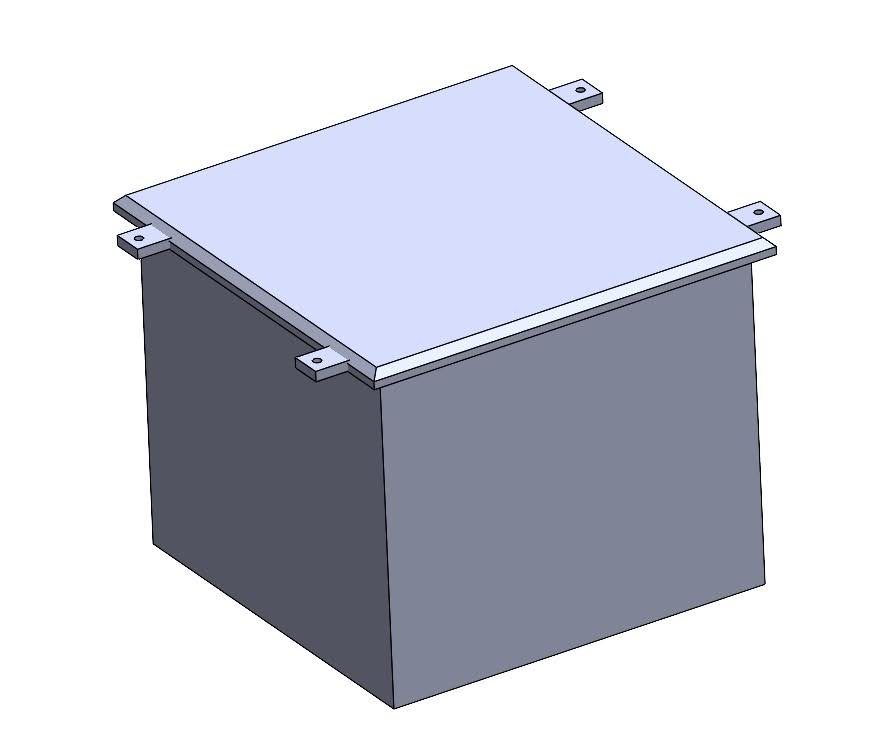
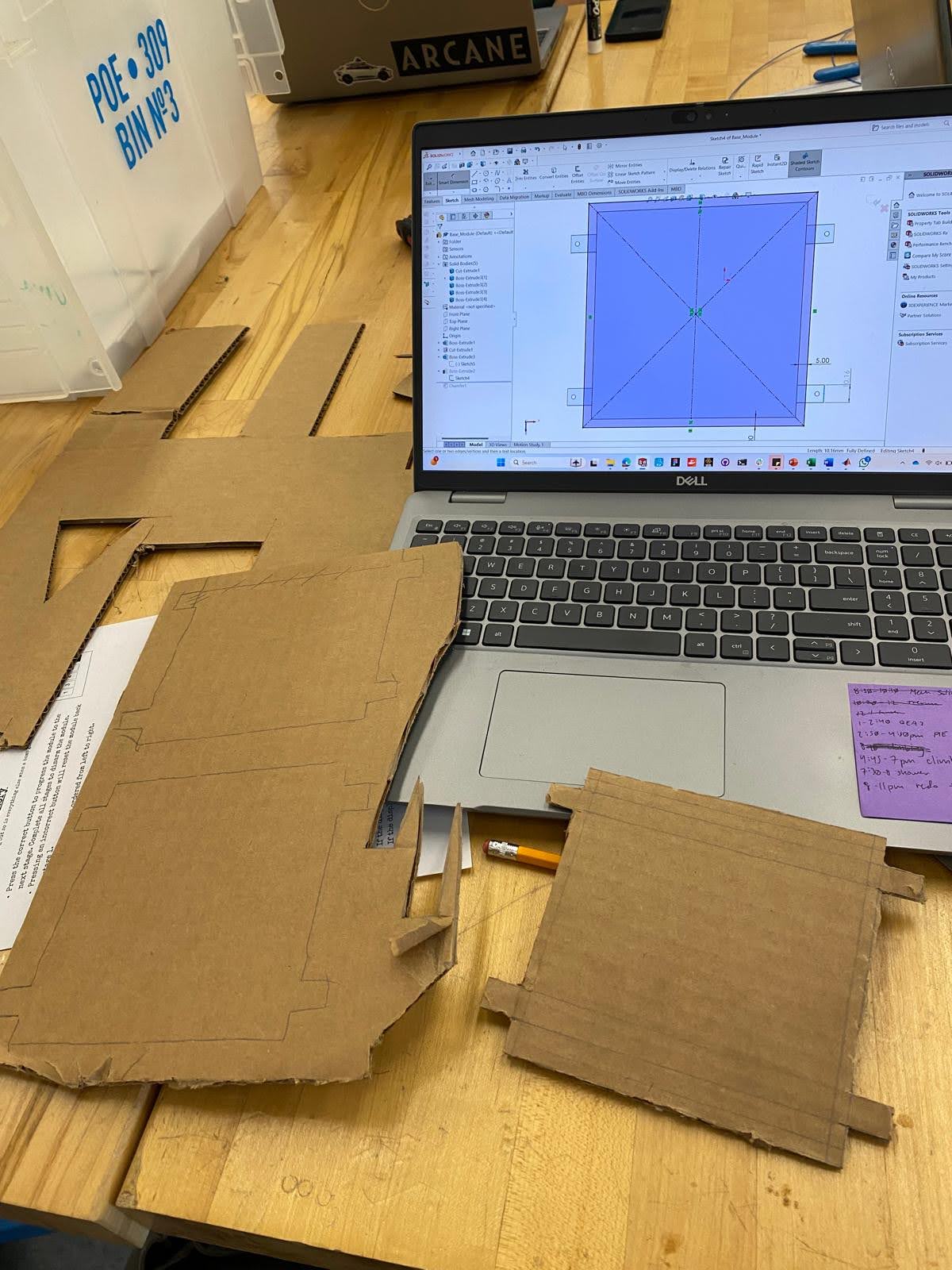
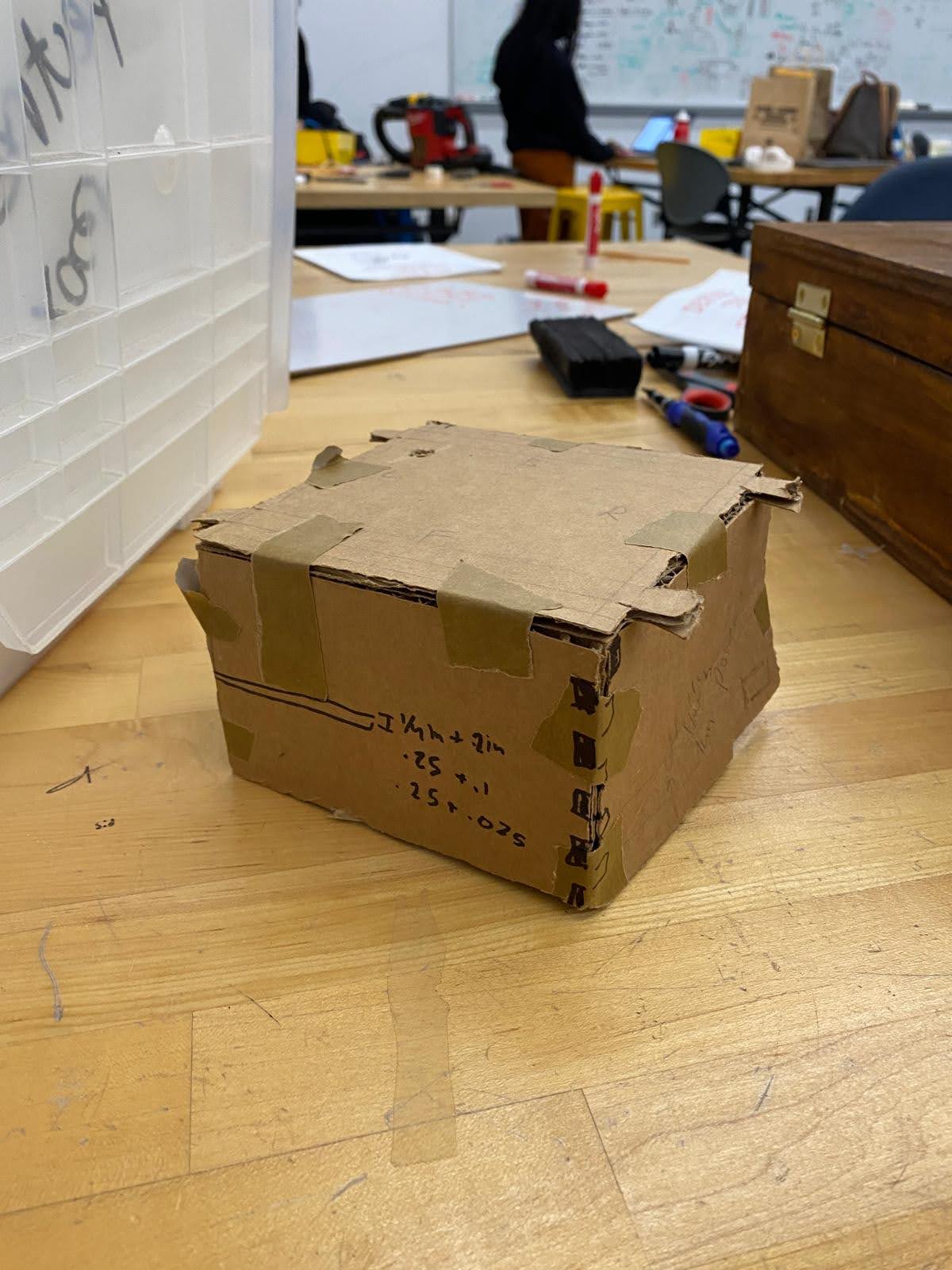
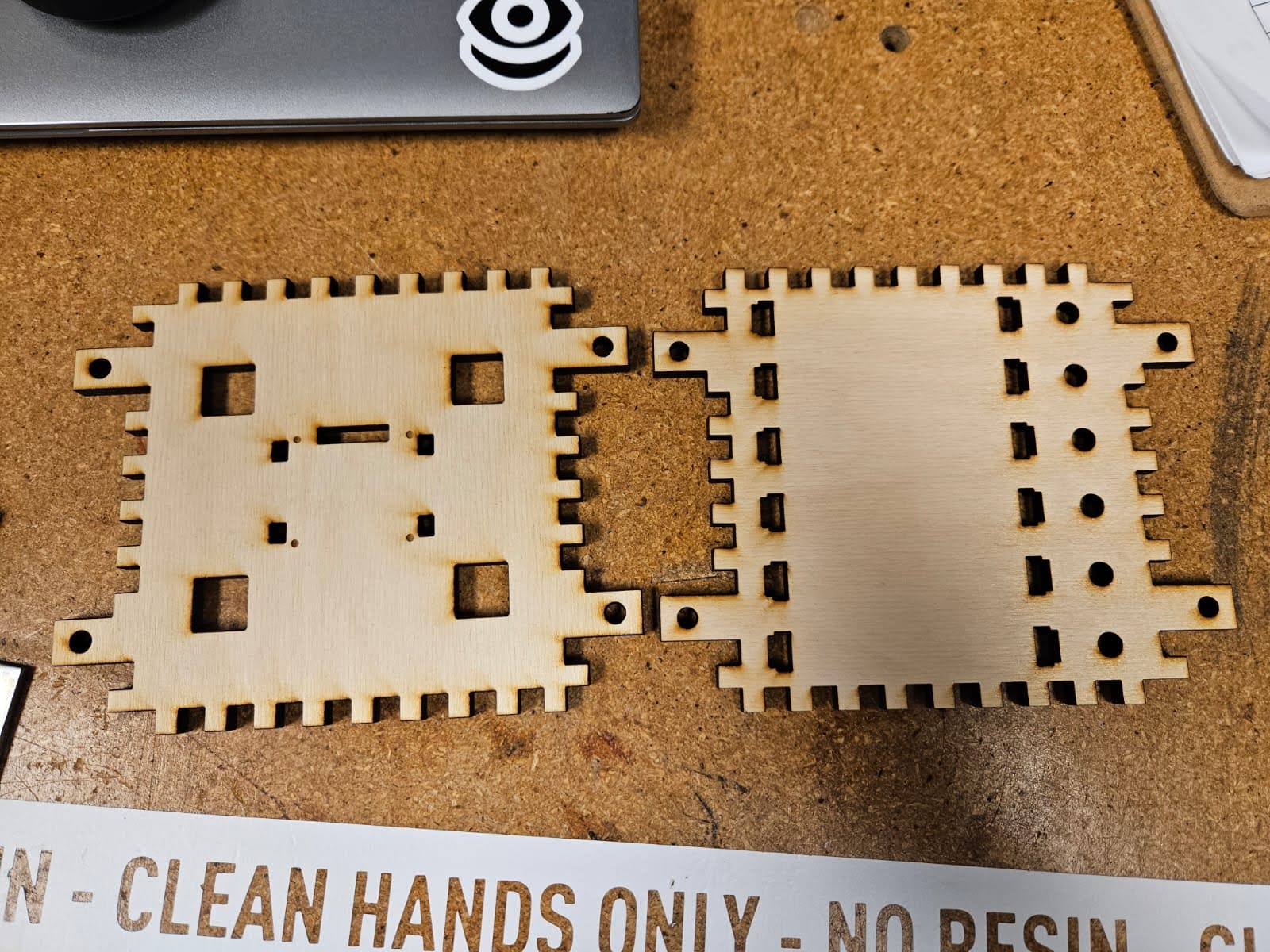
These 4 images show some early iteration prototypes of our modules.
Button
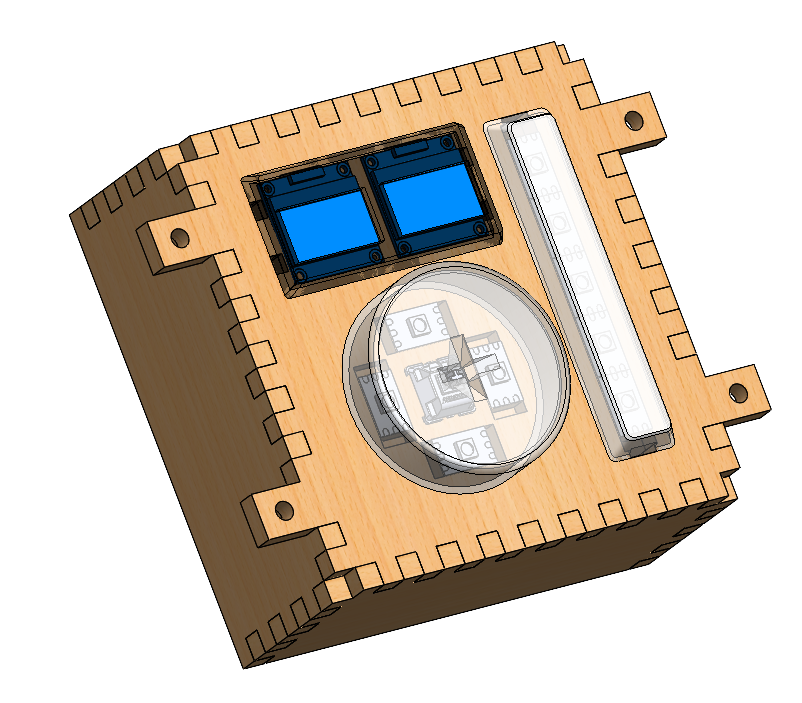
The button module closely mirrors the original module - the player presses the button in a different ways depending on the color of the strip and the symbols in the button-specific timer
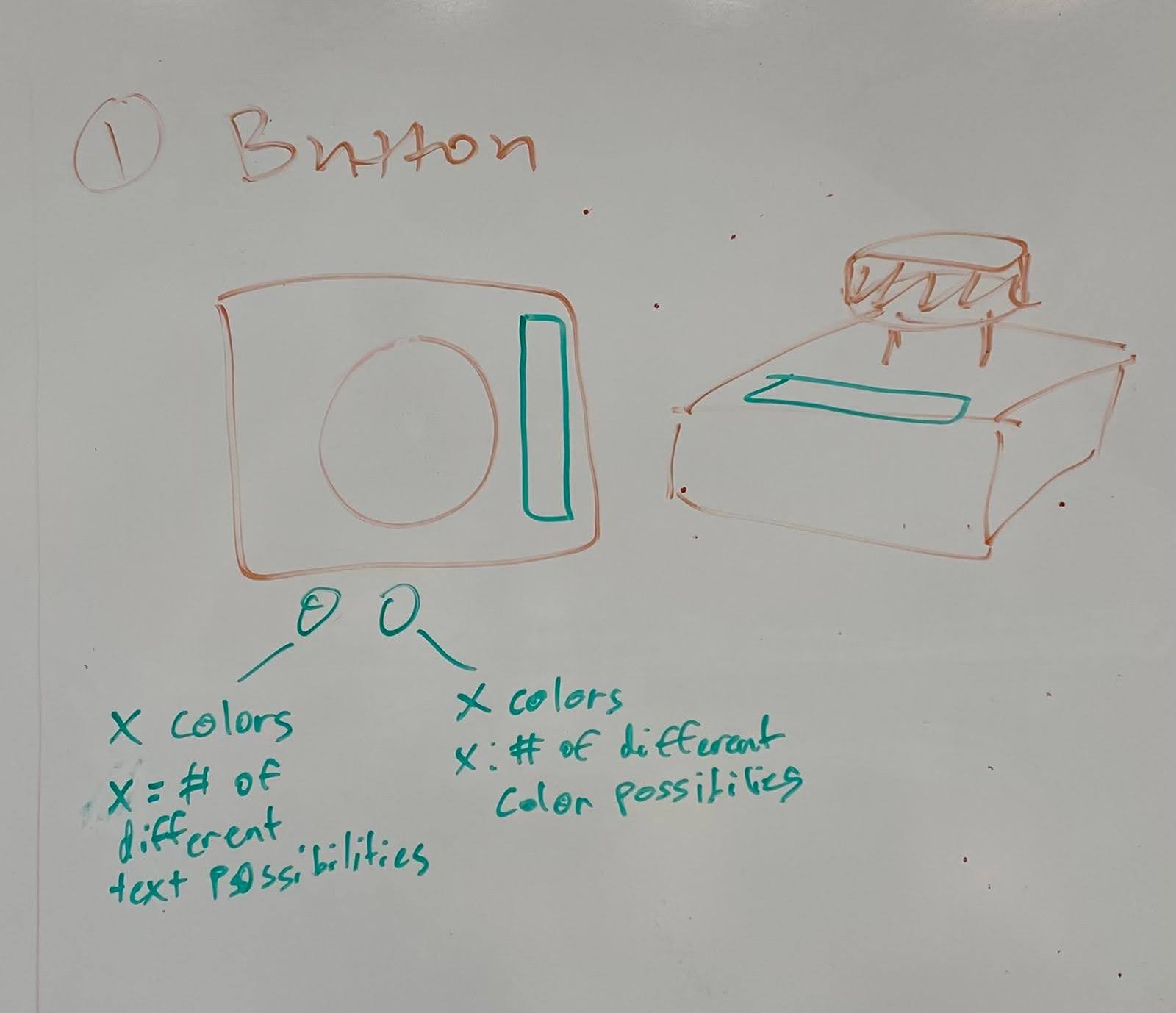
Early Design
Keypad
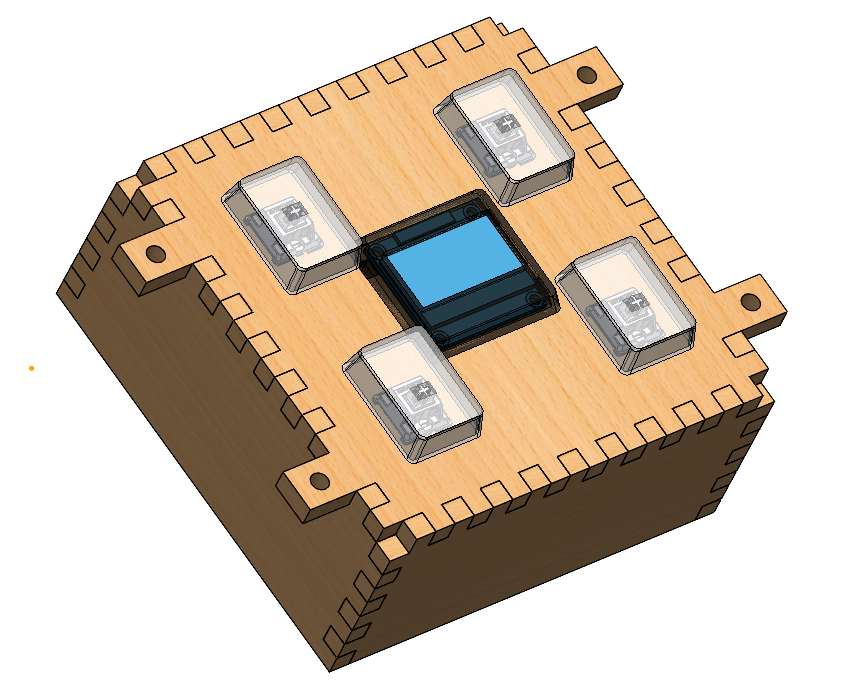
The KeyPad module is pretty identical to the module in the original game - the player reads out their set of 4 symbols and must then press the buttons in the correct order.
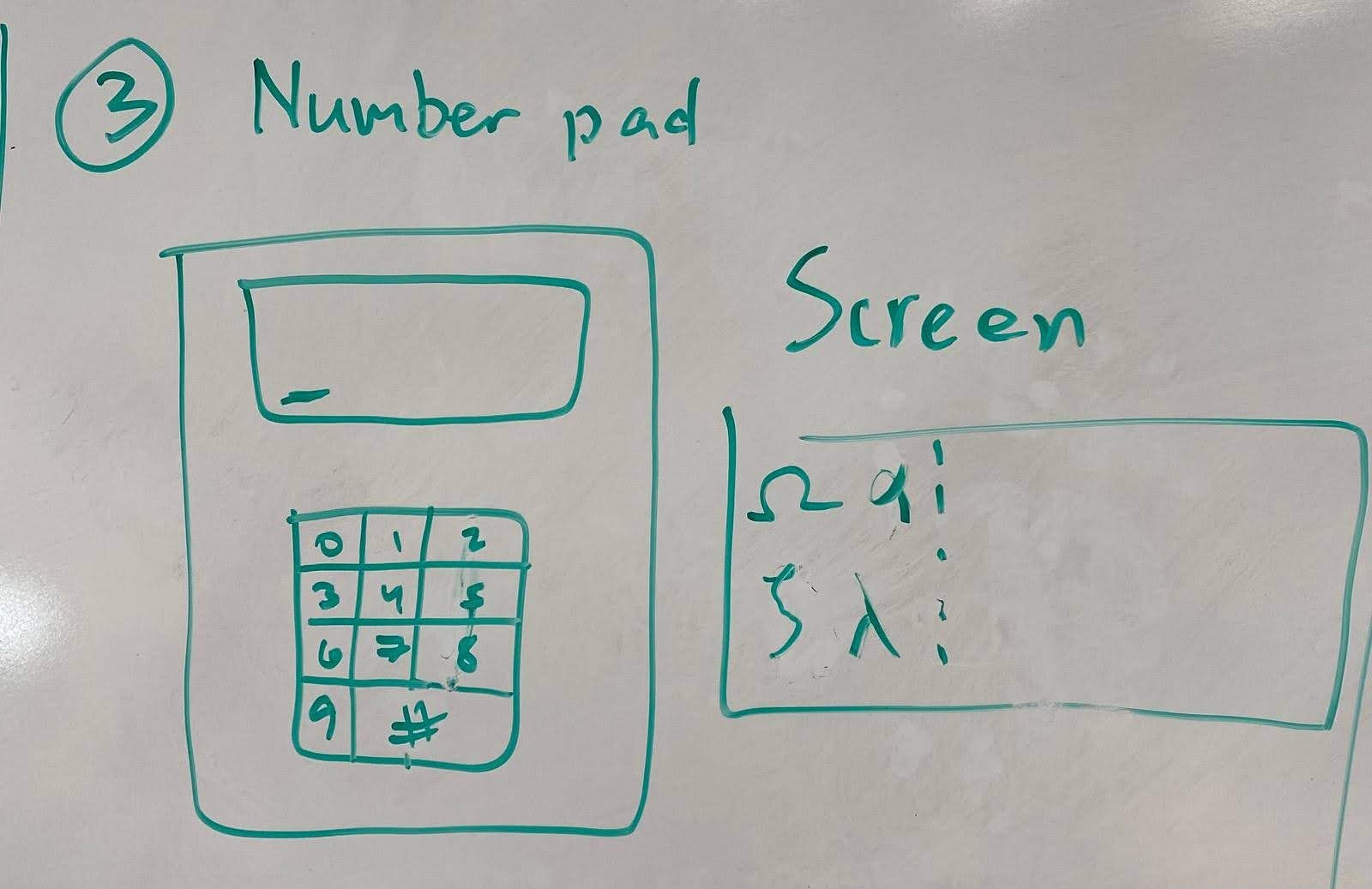
Early Design
Morse Code
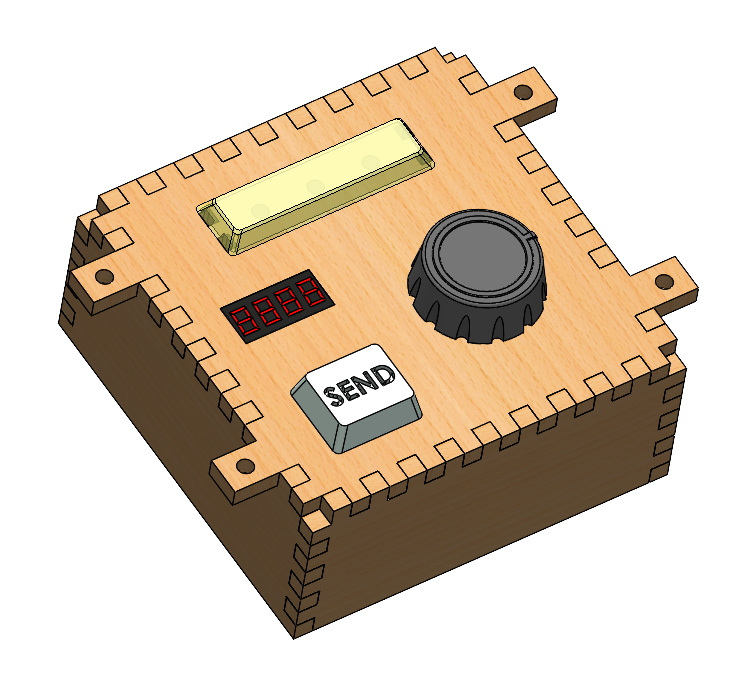
The Morse Code module is very similar to its in-game twin. Instead of a slider, the player must turn a potentiometer to reach a frequency based on the morse code word flashed by the LEDs at the top of the module.
Wires
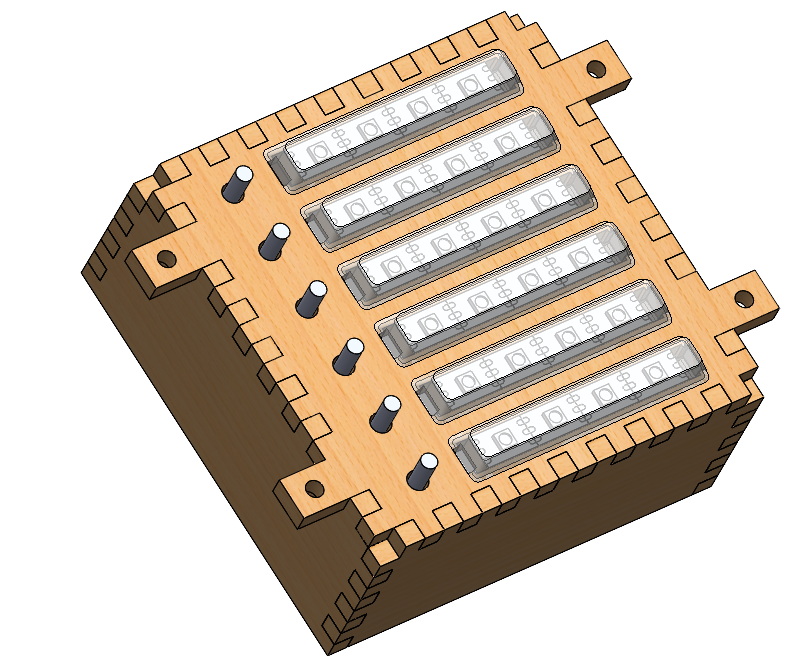
The Wires module has the same rules as the wires module in the original game, but instead of the player “cutting” a wire, they flip the switch next to the LED strip.
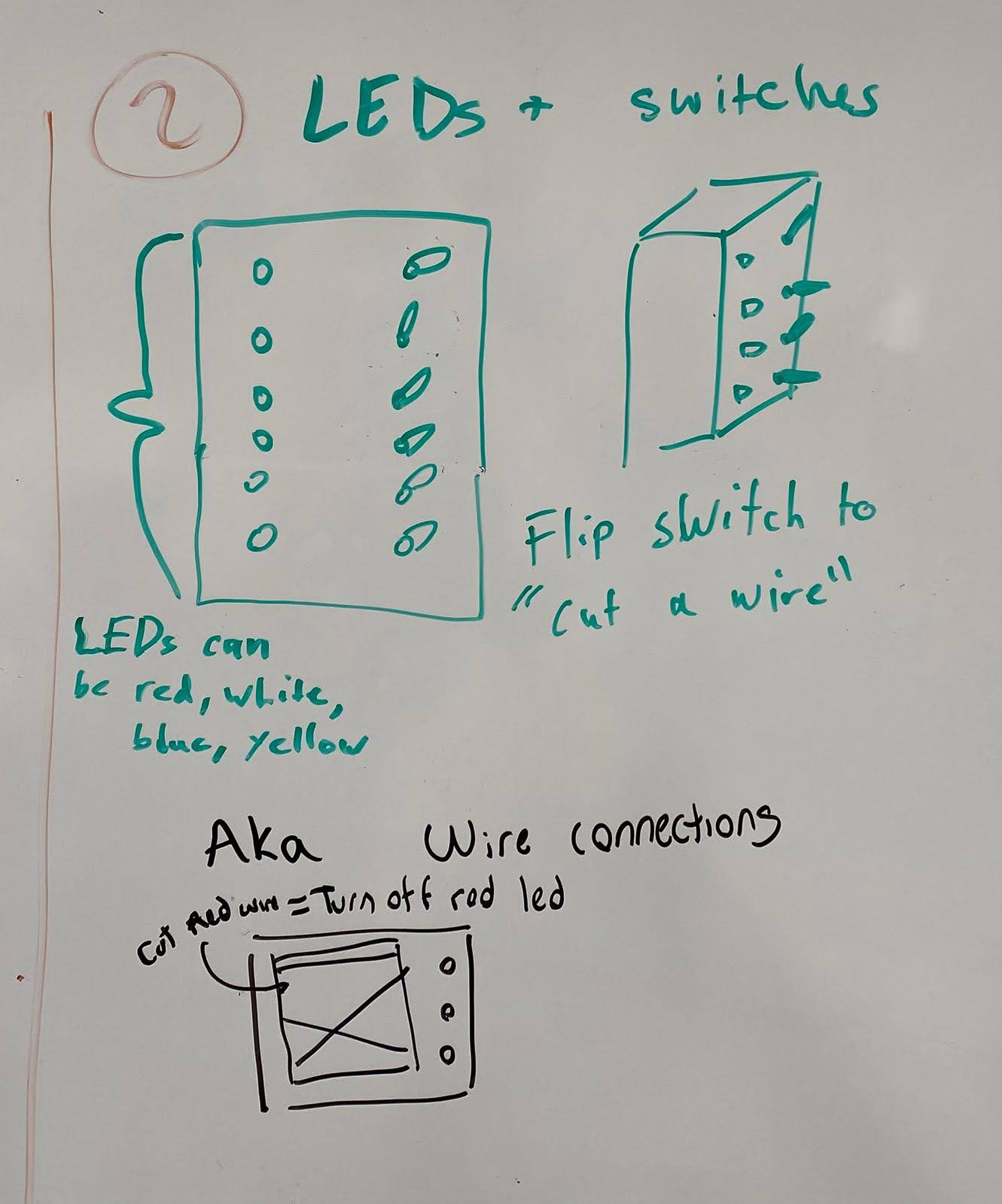
Early Design, note the inclusion of only LEDs, rather than strips
Memory
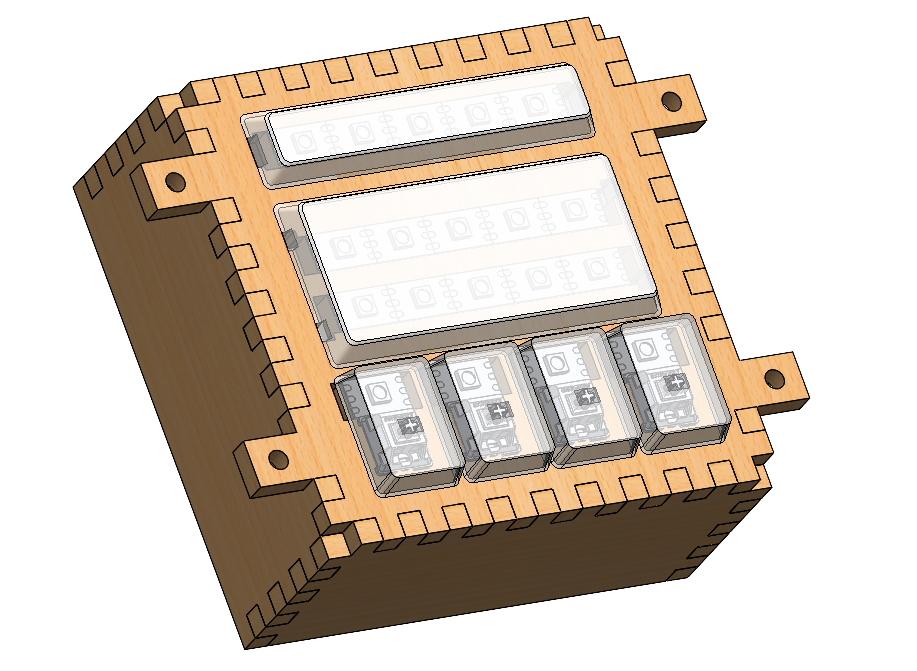
This module is very similar to the Memory module from ‘Keep Talking and Nobody Explodes’ - the biggest difference is that the physical numbers on the display and buttons are replaced with RGB LEDs
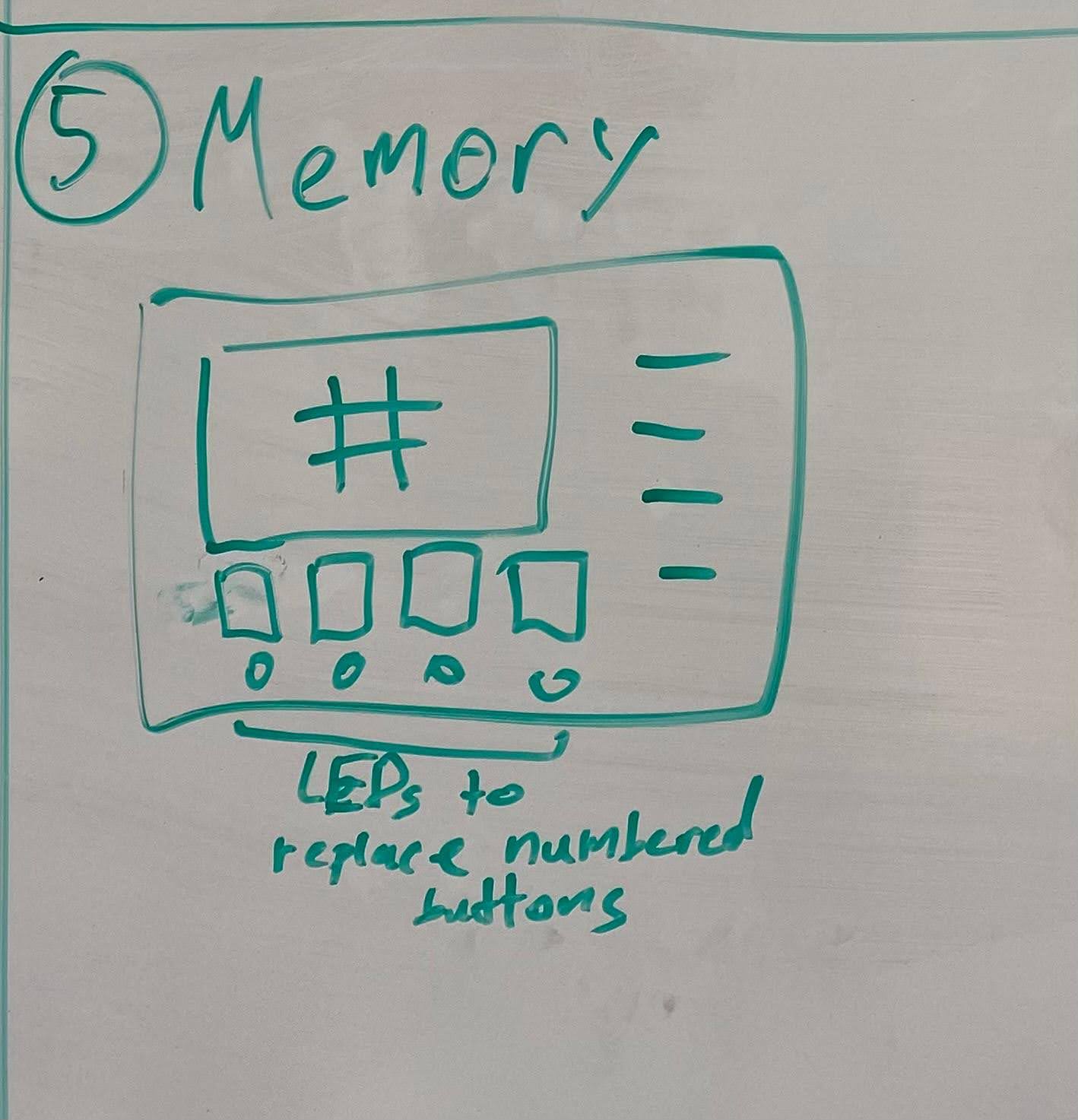
Early Design
Central Module: Timer
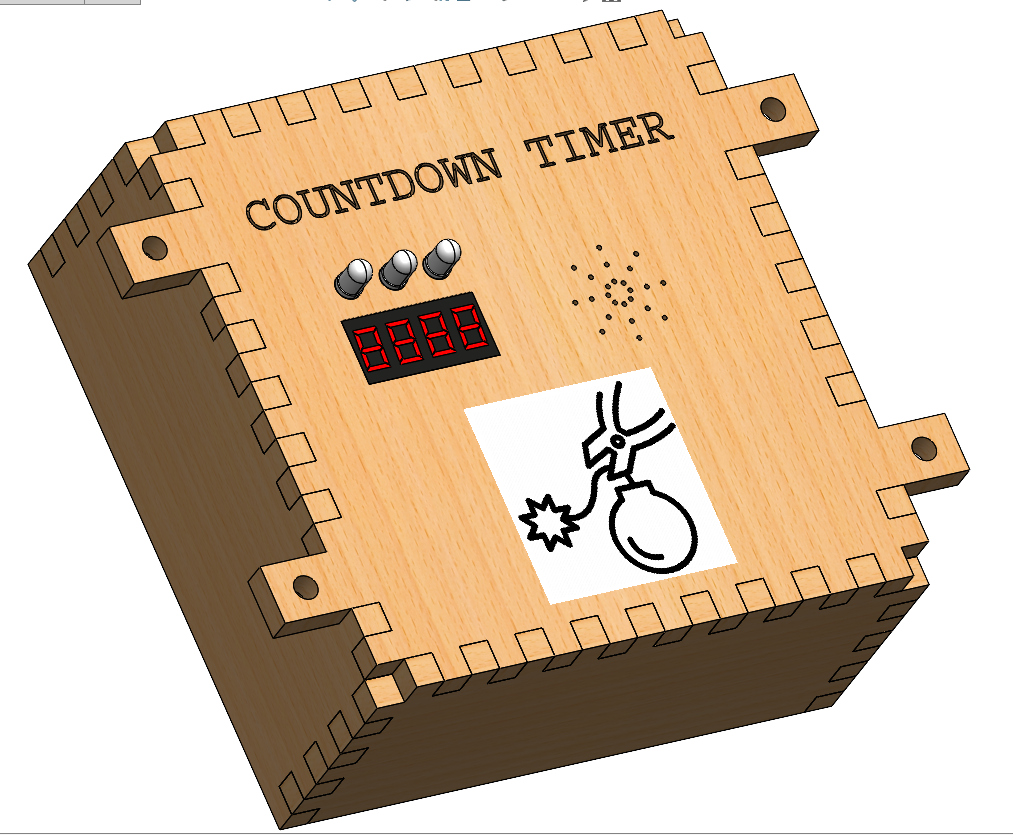
This module houses the bomb’s timer and the number of strikes players accumulate
Module-Suitcase integration:
To integrate the modules into the suitcase, created a sheet metal top that the modules would get screwed into. Because the modules are the same size, all but the timer module can be moved into any configuration the player desires. To keep the modules secure, we embedded rivet nuts into the sheet metal so that the modules could be easily screwed into the suitcase.
Various Progress Images
